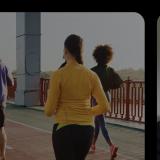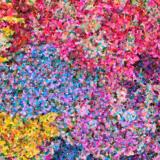'At its core, research is about people and when people get involved, we move faster towards breakthroughs, driving better health outcomes for everyone.'
Listen to Darryl O'Donnell, Adjunct Professor at UNSW, talk about how consumer and community involvement in research can lead to breakthroughs, and why you should have your say in the review of the Statement on Consumer and Community Involvement in Health and Medical Research (the Statement).
NHMRC and the Consumers Health Forum of Australia (CHF) are reviewing the Statement – have your say and get involved today.
- Video transcript
[An image appears of Darryl O’Donnell talking to the camera, with the NHMRC logo below and beside text at the bottom of the screen: What if we could cure HIV, Darryl O’Donnell, Adjunct Professor at UNSW]
Darryl O’Donnell: What if we could cure HIV?
[Images move through to show a close view of part of a virus cell, a close view of a capped syringe of red liquid, and then red liquid being dripped into a multi well plate]
Here in Australia, we have some of the world's best researchers working on this very challenge.
[Images move through to show a magnified view of cells on a slide, a drop of red liquid dropping onto a slide under a microscope, and then researches working in a lab]
Turning this possibility into reality demands collaboration.
[Images move through to show tubes being placed into a centrifuge, a hand using a laptop with a research paper on the screen, and then views of Darryl talking to the camera]
Researchers, government and communities that are mobilised in the fight against HIV all working together, because at its core, research is about people.
[Image changes to show a three-way split screen of a close view of an older male talking, above a young male’s eyes, above a rear view of the young male’s head as the older male talks]
And when people get involved, we move faster towards breakthroughs, driving better health outcomes for everyone.
[Music plays as the image changes to show a blue screen with the NHMRC logo]
[Image changes to show an animation of a HIV cell shaking and small black whirls appear over it, and then the image changes to show a close view of a female’s eye looking through a microscope]
HIV emerged dramatically and we didn't know how to treat or cure it.
[Image changes to show a magnified view of drops of red liquid dropping onto a slide]
Today we've made advances on so many fronts in HIV.
[Images move through to show medium and close views of Darryl talking to the camera, and then packaged medication as the image rotates clockwise]
We don't yet have a cure, but we do know how it's transmitted. We do know how to prevent it.
[Images move through to show a gloved hand holding up a blue pill between the index finger and thumb, a close view of an IV drip in the arm of a female, a close view of a male’s legs peddling a bike]
We've got effective treatments that keep people alive and well.
[Images move through to show a female jumping onto a bar, and then a reel of photos showing various colleagues in conversation, lab equipment, and researchers working]
Consumers and communities should always be at the centre of research.
[Image changes to show to show a female smiling, and then the image changes to show a male smiling]
All of us have a stake in health research.
[Images move through to show views of Darryl talking to the camera, views of researchers looking at a multi well plate, and then Darryl talking to the camera again]
At different points in our lives, we'll all benefit from advances in medicine and technology. Sometimes those advances can even save a life.
[Music plays as image changes to show a wide view of male using lab equipment and then the camera zooms in onto his face]
[Images move through to show measuring equipment in the male’s hands, a female smiling, fingers typing on a keyboard, split screens of various faces, and then Darryl talking to the camera]
The consumer statement sets out standards and expectations for how researchers and communities will work together to produce excellence in research.
[Images move through to show various views of female colleagues in conversation, colleagues working on computers, females doing activities outside, and a female giving a presentation]
The revision of the consumer statement is important for all of us because it's going to set new approaches for the ways in which consumers and communities and researchers are working together to advance health.
[Images move through to show views of Darryl talking to the camera, a computer screen with magnified views of cells, swabbing of a petri dish, toddlers playing outside, and a crowded beach]
No one has a greater stake in those advances in health research, in science and in technology than people who have HIV, and in their families and in their communities.
[Image changes to show an animation of various people spread out across the screen, then they assemble at the bottom of the screen]
Research can't happen without consumers and communities.
[Animation image shows blue circles rising from the assembled crowed and morphing into three stacked speech text boxes]
Have your say and get involved.
[Animation image shows a checklist clipboard appearing and the speech boxes merge onto the clipboard]
Visit our website to find out how you can participate in forums, and you can also fill in our survey.
[Music plays as the image changes to show the NHMRC logo on a blue screen]
End of transcript.


